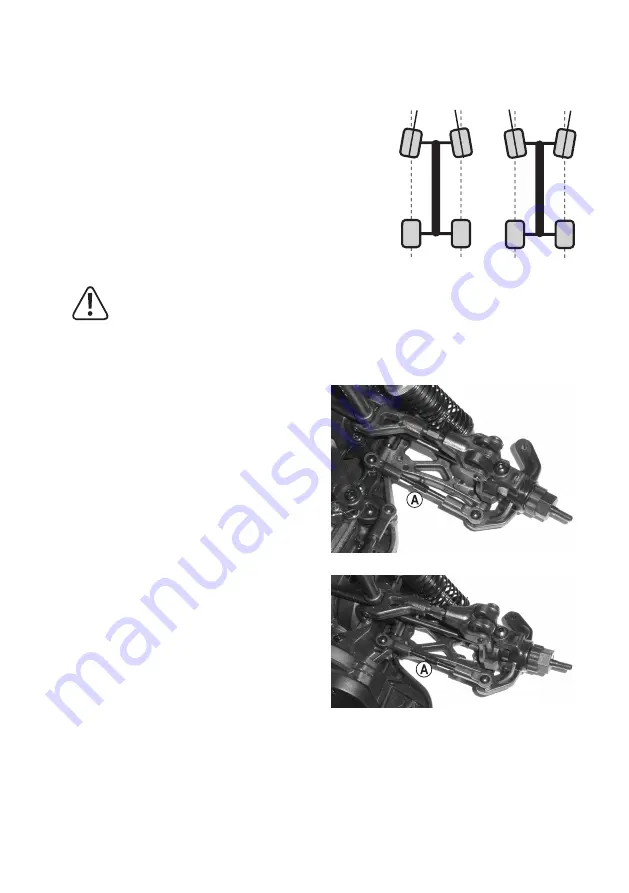
54
b) Setting the alignment
Wheel alignment (toe-in = figure "a", toe-out = figure "b") describes the
alignment of the wheel with regard to the driving direction.
During driving the tyres are pushed apart at the front because of the roll-
ing friction and are therefore no longer exactly parallel to the direction of
travel.
To balance this out, the tyres of the stationary vehicle can be adjusted in a
way so that they point slightly towards the inside. This toe-in improves the
lateral cornering of the tire and therefore leads to a more direct response
to the steering.
If a milder response to steering is desired, this can be achieved accord-
ingly by adjusting a toe-out, i.e. the wheels of the stationary vehicle point
outward.
A trail angle of more than 3° toe-in (A) or toe-out (B) leads to handling problems and reduces the speed. It
also increases tyre wear.
The figure above shows a heavily over-emphasised setting. It is only used to show the difference between
toe-in and toe-out. If a similar setting is used for the vehicle, it will be very difficult to control!
Setting the front axle alignment:
For the front axle, the alignment can be set by turning
the steering knuckle arm (A). As this has a left and right
hand-thread, it does not have to be disassembled to be
adjusted.
Turn both steering knuckle arms the same amount (left
and right front wheel). Otherwise, the trim on the trans-
mitter has to be adjusted (or possibly the steering servo
control by adjusting the servo rod).
Setting the rear axle alignment:
For the rear axle, the alignment can be set by turning
the steering knuckle arm (A). As this has a left and right
hand-thread, it does not have to be disassembled to be
adjusted.
Always turn both knuckle arms equally (left and right rear
wheel).
¦ ¦
A
B
Summary of Contents for 2304801
Page 122: ...122 ...
Page 123: ...123 ...
















































